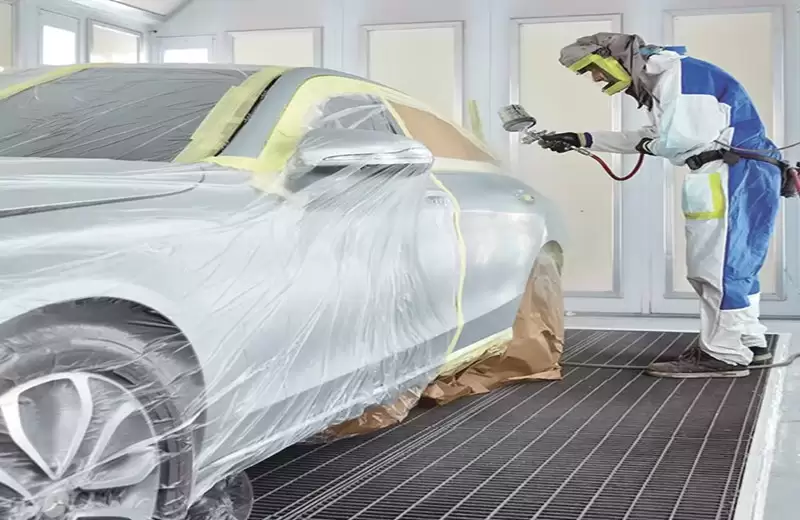
How to Apply Masking Film: A Step-by-Step Guide for Clean Auto Paint Jobs
When it's time to spray paint your car or truck, using a good pre taped masking film can be a total game-changer. This isn’t the messy newspaper-and-tape method of old–this is professional masking with zero dust, no tears, and clean removal. Let me walk you through how to use it like a pro.
Step 1: Choose the Right Material
Look for a high-density polyethylene sheet with built-in adhesive — sometimes labeled masking film for painting, self adhesive masking film, or plastic masking film. For automotive work, you'll want a static-charged, automotive masking film that sticks neatly to metal, glass, and plastic without sliding. The protective masking film should be flexible yet strong enough to cover a bumper or mirror.
Step 2: Prep and Apply the Film
1.Clean the surface thoroughly. Oil, dust, or wax = poor adhesion. Wipe with isopropyl alcohol before unrolling your film.
2.Unroll from one end, smoothing it across the panel. Work carefully to avoid wrinkles.
3.When you reach corners or curves—like wheel arches or door trim—fold the film gently, then seal the fold with masking tape.
4.Bring a small piece of auto body masking film to tape around handles, lights, and tight spots. That gives you a nice buffed-off edge and avoids accidental overspray.
Step 3: Seal the Edges
Edges are where mistakes happen. Apply tape along the perimeter, overlapping the masking film just a touch. This ensures no paint seeps under. Trust me, that overlap makes all the difference—you get professional, sharp demarcation every time.
Step 4: Cover Windows and Bumpers
Use self adhesive masking film for glass. Press it onto the window frame, stretching gently to avoid bubbles. For big surfaces, like bumpers or entire panels, spray or press the plastic masking film evenly so there's zero sag and maximum protection.
Step 5: Spray With Confidence
Now for painting! Your automotive performance masking tape system is sealed tight—no drips, no smudges. I like to start from far edges and work inward for even coat layers. Nice, clean lines happen when you trust your masking film.
Step 6: Peel It Off Carefully
Once painting's done, wait about an hour—before the film sets in permanently. Peel slowly at a 45°angle and—bonus—no sticky mess. That's the beauty of professional masking tape, especially when you're aiming for a painter-level finish.
Why Choose Masking Film Over Newspaper?
• Faster rollout: No daily struggle with loose sheets that fall off
• Cleaner edge lines: No fraying, no color bleed
• One-person job: What once took two people and tape—now done solo in minutes
• Versatile use: Great for cars, boats, furniture—you name it!
• Cost-effective: Pays off with saved labor time and easier cleanup
Important Tips & Tricks
• In cold temps, warm the surface slightly with a heat gun. The film sticks better.
• Never apply film over wet paint or heavy wax.
• Avoid using old or sun-exposed film—it won’t stick cleanly.
• Once the paint is dry but not fully cured, peel the film. Delaying risks stick-back or peeling the finish.
• Keep extra rolls handy—you’ll be surprised how fast you go through it!
BONUS Benefits of Professional Masking Film
• The film is electrostatically charged, so it clings even on slippery parts.
• Its surface is corona-treated, helping paint coat edges stay clean and crisp.
• Covers large areas with minimal effort—skip the tear-ridden newspaper days.
When to Use Masking Film
• DIY car stripe jobs
• OEM or refinish body shop work
• Spray painting interior trims or engine covers
• Hobbyist projects—think resin, furniture, or crafts
FAQ: Common Questions
Q: Can I use masking film on metallic paint?
A: Absolutely. If you prep and tape correctly, it peels cleanly off any paint type.
Q: Does it resist solvents and overspray?
A: Yes—most auto body masking film protects well against clear coat solvents, thinners, and even sticky primer splash.
Q: How long will it stay put?
A: Up to 24 hours clean indoors. If baking or hot sunlight—remove within 30–60 minutes after painting.
Final Take
If you want pro-looking paint jobs—sharp lines, no overspray, no sticky mess—then using real masking film for painting is a must. Skip the old-school hassles and go straight for clean, efficient, reliable results. Once you try it, you'll never go back to newspaper and tape again.
RELEVANT POSTS >
How Long Should I Wait To Remove Masking Tape After Painting?
